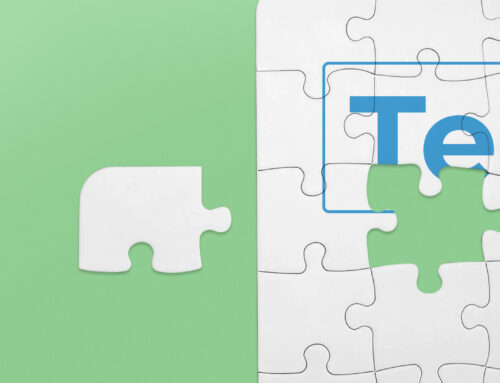This DISC behavioural style tip from The DISC Group is all about people with the I Style – the Influence style. Get the best from your meetings and conversations by understanding your colleagues’ behavioural preferences and priorities using the DISC assessment.
About the Influence DISC profile
Inspired by DISC theory put forward by William Moulton Marston in his 1928 book The Emotions of Normal People, the Influence personality style is one of the four DISC profiles identified through the assessment. People with this style of personality are people-oriented, enthusiastic, and optimistic. Influence profile individuals make a great addition to any team because they’re positive team players who get on well with everyone. Let’s take a closer look at the strengths and weaknesses of this DISC style.
Strengths of the Influence personality type
Influence styles’ primary strengths are their enthusiasm, persuasiveness, and friendliness. They are ideas people who have the ability to motivate others, getting them caught up in their dreams and enthusiasm. They are very persuasive, influencing others and shaping their environments by building alliances and accomplishing results. They are good at involving the whole team in any meeting or activity. You can then rely on them to seek nods, comments of approval, and recognition for those results. If compliments don’t come, Influence Styles may invent their own. “Well, Dave, I just feel like patting myself on the back today for a job well done!”
They are stimulating, talkative, and love to communicate with others. They also love being the centre of attention – the life and soul of the meeting, or party!
Limitations of the Influence personality
The natural limitations of this personality type are that they can be impatient if a job requires diligence and sustained effort, they really don’t like operating alone, and they tend to have short attention spans – this can lead them to become easily bored. Influence styles tend to make sweeping generalisations based on little data, and they can be unguarded optimists about almost everything. Type I individuals are people-oriented, not detail-oriented, which means they can sometimes over-promise or fail to follow through with tasks.
Their natural tendencies are not to check everything out, as they assume that someone else will do it, or they tend to procrastinate because re-doing something just isn’t exciting enough for them! When Influence styles feel they don’t have enough stimulation and involvement, they get bored and look for something new again… and again… and again. When taken to an extreme, their behaviours can appear superficial, haphazard, erratic, and overly emotional.
Finally, a key limitation of I type personalities is their dislike for conflict. Preferring to keep everyone happy and be liked by everyone, individuals with the Influence behavioural style may struggle to deal with uncomfortable conversations or avoid conflict in a work environment. This can limit their leadership skills because of their desire to keep team members happy.
Growth opportunities for I type individuals
Individuals with the I DISC behavioural type have a few areas for potential growth, including their attention to detail, their approach to conflict in the workplace, and their method of completing tasks. While their positive nature and optimistic outlook are some of the ways that I personalities are able to motivate their team members, they may need to work on adopting a more analytical approach to their work so that they do not overestimate or over-promise results.
For I types working with D types
I types and D types can be a great team if they learn to communicate effectively with each other. While Dominance style individuals prioritise directness and assertiveness in their communication with less regard for the feelings of others, I style individuals may beat around the bush in order to make their coworkers more comfortable. Therefore, to work most effectively with D style personalities, I types need to work on communicating directly and clearly, explaining why the conversation relates to big-picture goals and end results.
Conflict resolution skills are also important for Influence personalities working with Dominance types. While I types might shy away from difficult conversations, they need to work on their ability to speak up and share their ideas, even if they contradict the opinions of outspoken D types.
For I types working with S types
Influence and Steadiness personalities can get on like a house on fire. While I types are outgoing, optimistic, and enthusiastic, S types are calm, patient, and great listeners and team workers. However, Steadiness types prefer slower-paced working in a chilled out environment, which more bubbly and energetic I types should be considerate of.
While people with Influence personality styles might enjoy change and flitting between different projects that interest them, S types may prefer a more structured work style. To work best with Steadiness types, I style individuals need to build trust with them and recognise that change makes them uncomfortable.
For I types working with C types
Influence and Compliance DISC profiles can be very complementary when the individuals understand each other’s personalities and behaviours. While Influence style people are energetic, expressive, and people-oriented, C types tend to be more logical, critical, and pragmatic – they’re great problem solvers who prefer to work independently. The detail-oriented nature of C types is a good contrast to Influence types’ tendency to generalise or overlook the specifics, so Influence types can learn a lot from C styles.
Due to the sociable and friendly nature of Influence personalities, people with the Influence profile may need to learn to not take their coworkers’ independent working style personally. I types should not be worried if their C type coworkers take a while to open up to them; people with Compliance personalities are often private and cautious people who take some time to bond with new people.
For I types working with other I types
Chatty and friendly, teams with multiple I types will likely form strong interpersonal connections that energise and motivate the team. However, I types working with similar personalities must be careful to ensure that tasks are completed, details acknowledged, and goals met. Because of the type I personality’s tendency to avoid conflict or uncomfortable situations, it’s essential that I types learn to work through issues together and address problems before these turn into serious issues.
Conclusion
Want to learn more about the different DISC personality types? Read about the strengths and limitations of the Dominance, Steadiness, and Compliance styles.
To learn more about your personal DISC profile, those of the people you work with, and how you can use that knowledge to build better working relationships, contact DISC Group today. Our DISC assessment is simple and easy to use and can help your organisation build stronger teams and more effective leaders.
You can also call Disc Group at 0203195 2898 or email the team at sales@thediscgroup.co.uk.





